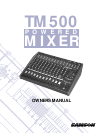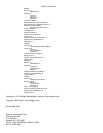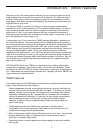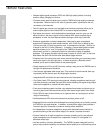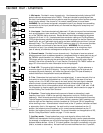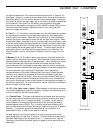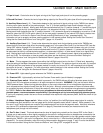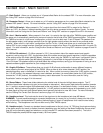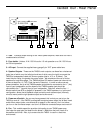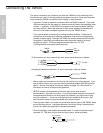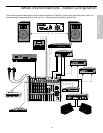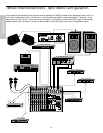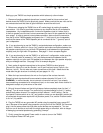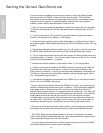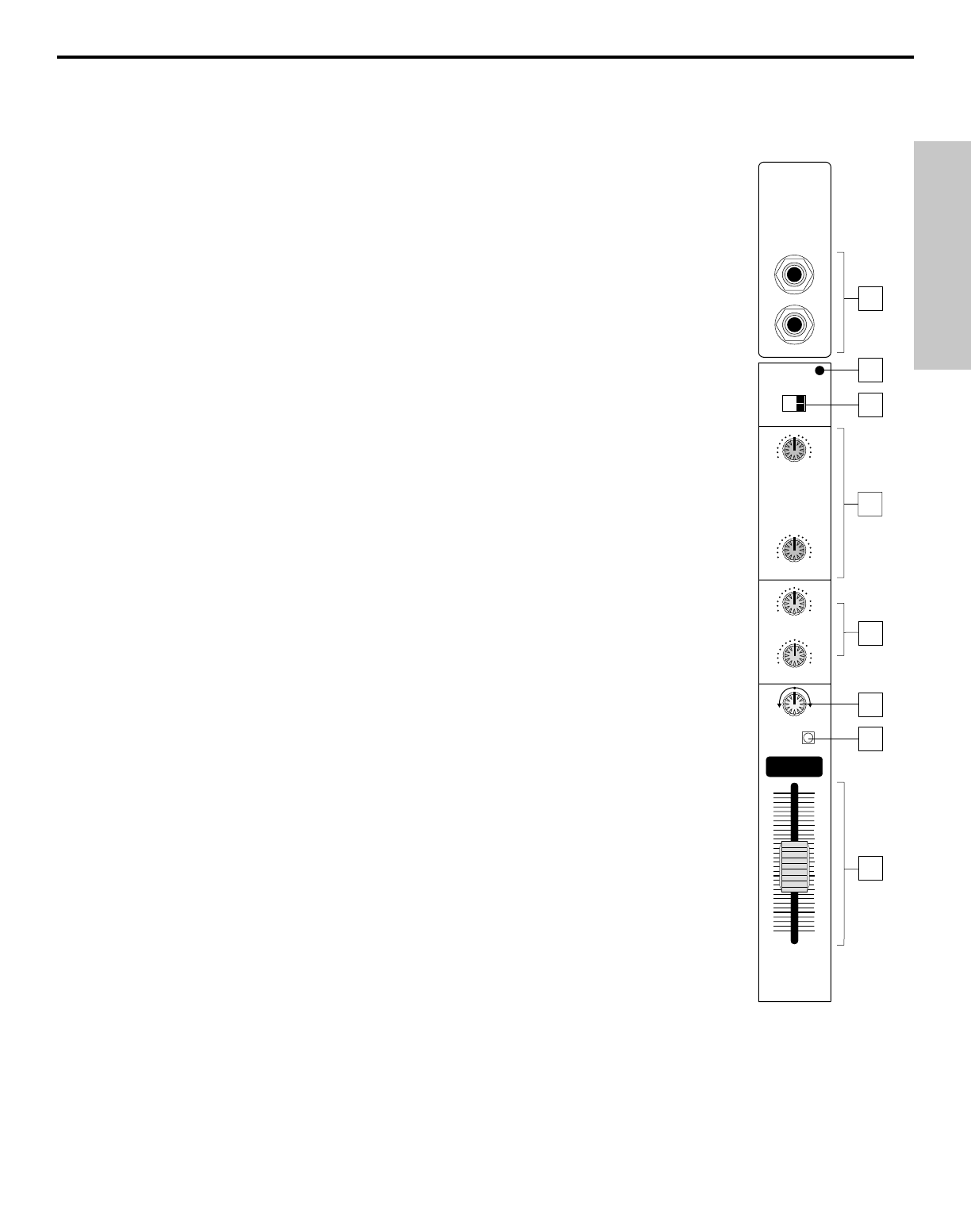
Guided Tour - Channels
the signal is boosted; as it is turned counterclockwise from the “0” position, it is
attenuated. Aux send 1 is post-eq but pre-fader; that is, the level of the signal is
determined solely by its Trim control (see #5 on the previous page). In contrast,
Aux send 2 is post-eq and
post-fader; that is, the level of the signal is determined
by the channel’s Trim control, its EQ settings, and the position of its fader.
Aux send 2 is also used for routing signal to the TM500’s internal DSP For more
information, see the “Using Aux Sends and Returns” and “Using the DSP”
sections on pages 20 and 22.
8: Pan (Ch 1-8) - Provided in mono channels only, this knob allows you to place
the input signal anywhere in the left-right stereo spectrum, while keeping the
overall signal level constant. When the knob is placed at its center (detented)
position, the signal is sent equally to both the left and right main outputs. When
moved left of center, less signal is sent to the right output and more signal is sent
to the left output (making the sound appear left of center) and when moved right
of center, less signal is sent to the left output and more signal is sent to the right
output (making the sound appear right of center). To route a signal hard left or
right, place the pan knob either fully counterclockwise or fully clockwise. For
more information, see the “Using Pan and Balance” section on page 19 in this
manual.
9: Balance (Ch 9-12)- Provided in stereo channels only, this knob controls the
relative levels of the paired input signals. When the knob is placed at its center
detented position, both signals are at equal strength. When moved left of center,
the odd-numbered (left) input signal remains at the same strength but the
even-numbered (right) input signal is attenuated; when the knob is moved right
of center, the even-numbered (left) input signal remains at the same strength but
the odd-numbered (right) input signal is attenuated. When placed fully
counterclockwise, only the odd-numbered (left) input signal is heard (panned
hard left); when placed fully clockwise, only the even-numbered (right) input
signal is heard (panned hard right). When only the odd-numbered (left) input is
connected in a stereo channel, the Balance knob functions as a constant level
Pan control, allowing you to continuously place the incoming signal anywhere in
the left-right stereo field. For more information, see the “Using Pan and Balance”
section on page 19 in this manual.
10: PFL (“Pre Fader Listen”) switch - When pressed in, the channel is soloed
in connected headphones (see #25 on page 8). Soloing is non-destructive; that
is, it has no effect on the main stereo output.
11: Channel Fader - This linear slider determines the signal level being sent to
the main output as well as affecting the signal level being routed to Aux send 2
(which is post-fader; Aux 1 is always pre-fader). In practice, you will use the
channel faders to continuously adjust the levels of the various signals being
blended together by the TM500. The “0” position of the fader indicates unity
gain (no level attenuation or boost). Moving the fader down from the “0” position
(towards “∞”) causes the signal to be attenuated (at the very bottom, it is
attenuated infinitely—in other words, there is no sound).
For best signal-to-noise ratio, all faders for channels carrying signal should
generally be kept at or near their “0” position. Channels that are unused should
have their faders kept all the way down at their “∞” (minimum) level. See the
“Setting the Correct Gain Structure” section on page 14 in this manual for more
information.
7
2
4
7
6
9
10
11
5
40
O
O
OO
OO
35
30
25
20
15
10
0
9L
MONO
10R
9/10
PFL
PEAK
HIGH
-15
+15
0
LOW
-15
+15
0
AUX1
∞
+10
PRE
AUX2
∞
+10
BALANCE
L
R
+4dB
-10dB
-2dB
0
0
Stereo Channel
ENGLISH



